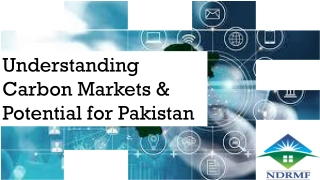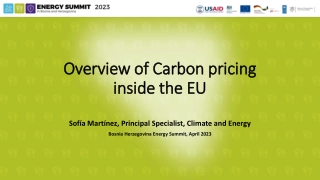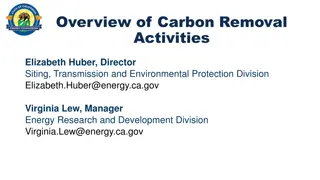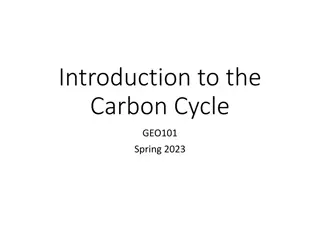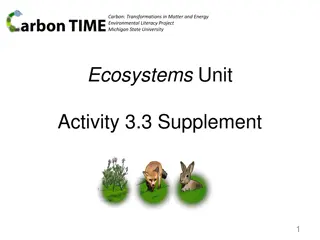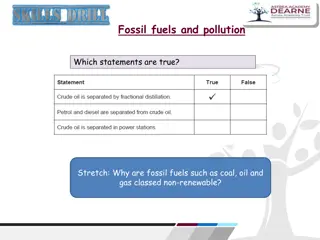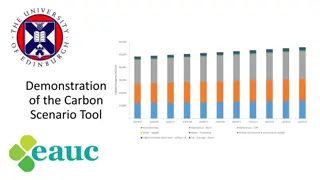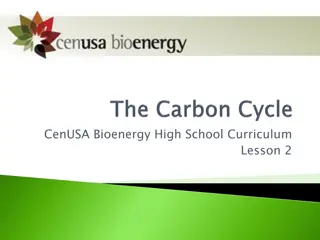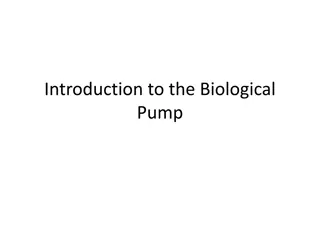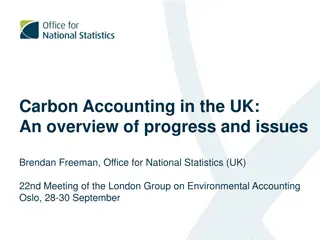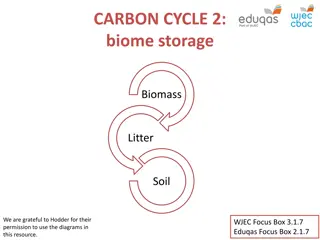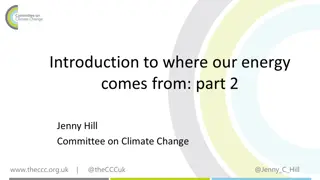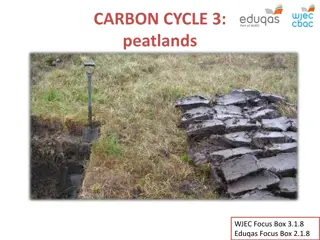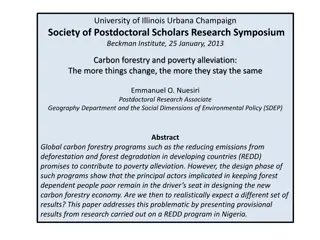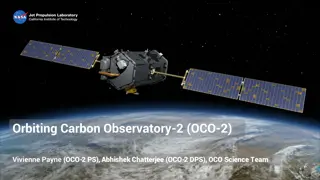
Advancing Knowledge of Carbon Processes
This content delves into gaps in knowledge of carbon-relevant Earth System processes, exploring ecosystem structure, biodiversity, carbon sinks, and more. It also discusses ecosystem resilience, vulnerability to climate change, and teleconnections impacting carbon cycling. Specific questions on permafrost, pathogens, tropical forests, coastal areas, oceans, and drylands are addressed.
Download Presentation

Please find below an Image/Link to download the presentation.
The content on the website is provided AS IS for your information and personal use only. It may not be sold, licensed, or shared on other websites without obtaining consent from the author. If you encounter any issues during the download, it is possible that the publisher has removed the file from their server.
You are allowed to download the files provided on this website for personal or commercial use, subject to the condition that they are used lawfully. All files are the property of their respective owners.
The content on the website is provided AS IS for your information and personal use only. It may not be sold, licensed, or shared on other websites without obtaining consent from the author.
E N D
Presentation Transcript
Breakout 2 Nancy Glenn Laura Duncanson
1. What are the gaps in our current knowledge of carbon-relevant Earth System processes? What are the linkages between ecosystem structure and process? Biodiversity and ecosystem processes Ecosystem structure and relationship to environmental & geophysical variables Partition between GPP and autotrophic and heterotrophic respiration Carbon sinks and transfer between land, ocean and atmosphere Urban and anthropogenic systems Once identified, how do we fill knowledge gaps in a process-based understanding of the carbon cycle? More, different, and more consistent data Cal/val Airborne/field/lab Spaceborne Interagency cooperation when data are unavailable Better fundamental theory E.g. Process-based understanding of autotrophic and soil respiration E.g. How do plants allocate carbon to growth and respiration? E.g. What s the role in hydrology in determining the fate of carbon? Better / more consistent statistics / models E.g. Fundamental theory in models How do we integrate between the following? Multiple disciplines Multiple agencies Multiple scales Multiple sensors Statistical measures Statistical frameworks Cal/val addressing all of above *address at multiple spatial/temporal scales
2. What makes ecosystems and communities resilient, vulnerable, and adaptable to climate change? What defines ecosystem and community vulnerability/resiliency? e.g. ecosystem services such as productivity (with respect to carbon cycling), food and water security, shifting infrastructure How do we quantify vulnerability/resiliency? What are the associated indicators? e.g. wrt biodiversity, focus on functional rather than species richness Are there critical tipping points , if so, what and where are they? How close are we to them temporally? What is the balance between risk and mitigation potential? What are the feedbacks between natural and anthropogenic forcings? What scale (spatial/temporal)? *address at multiple spatial/temporal scales
3. What teleconnections drive carbon cycling and what are their underlying processes? Amazon smoke Warming of high latitudes Ocean circulation patterns Dust Land cover, climate and environmental linkages e.g. deforestation changing albedo/hydrologic cycle Low frequency variability e.g. PDO, ENSO Urbanization *address at multiple spatial/temporal scales
4. Questions in specific regions, topics of particular sensitivity, and/or large unknowns Permafrost / high latitudes How will permafrost thaw affect biogeochemical, hydrologic, and ecosystem change and feedbacks (e.g. methane)? Pathogens / Diseases / Invasive Species What are the feedbacks and their relative importance? Changing phenologies and feedbacks? Tropical forests How sensitive are carbon stocks & fluxes to changing climate/anthropogenic /phenology? Coastal areas How can we mitigate the coastal squeeze? Oceans How much carbon is sequestered in the deep ocean? Drylands How much carbon loss will occur with desertification? Pollution e.g. aerosols, human health Urban Areas How does urbanization contribute to the global carbon cycle? Soils E.g. What are global soil carbon stocks? Forest allometry How accurate are allometric equations for est tree biomass? *address at multiple spatial/temporal scales

